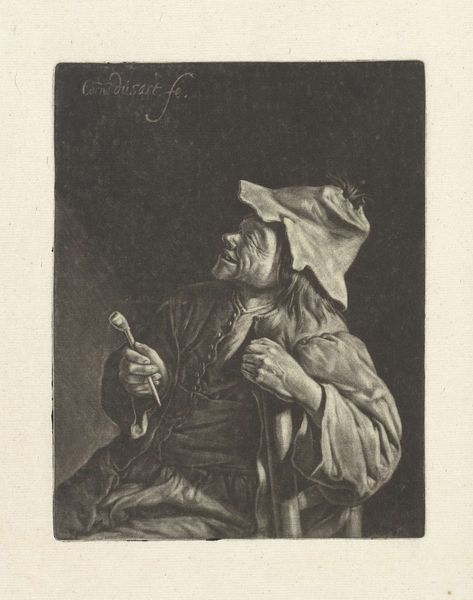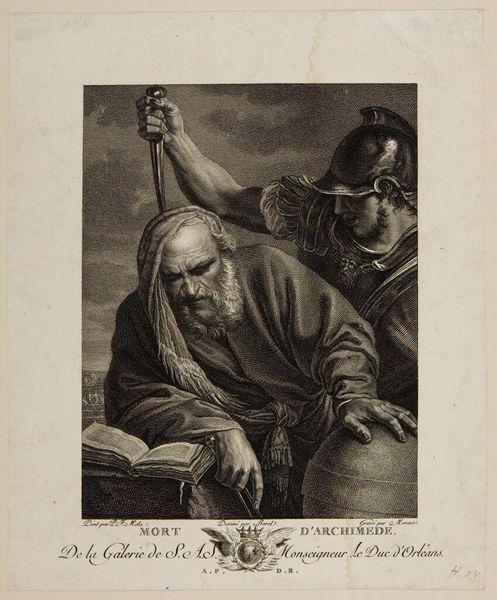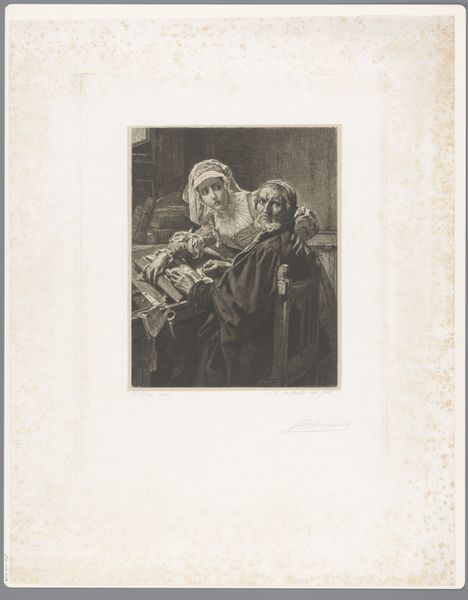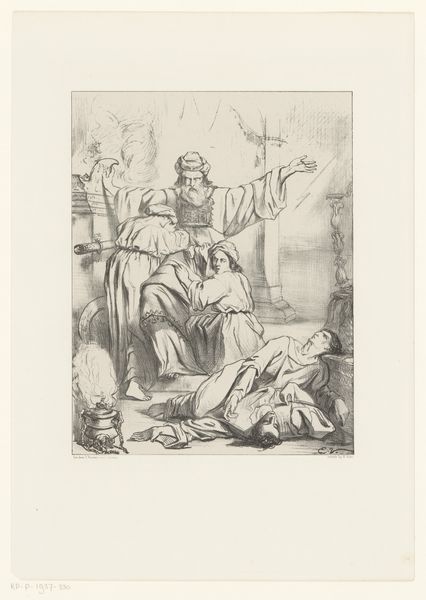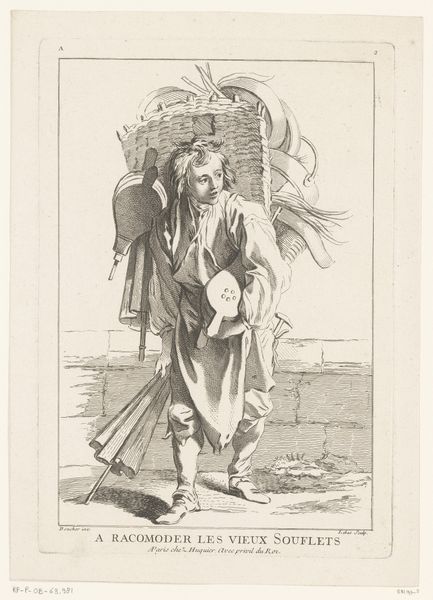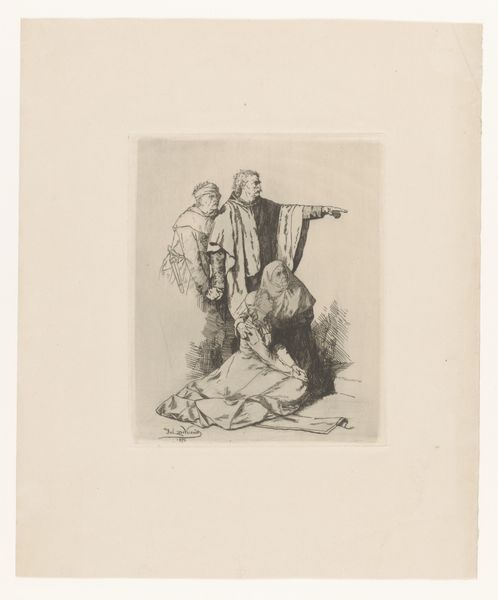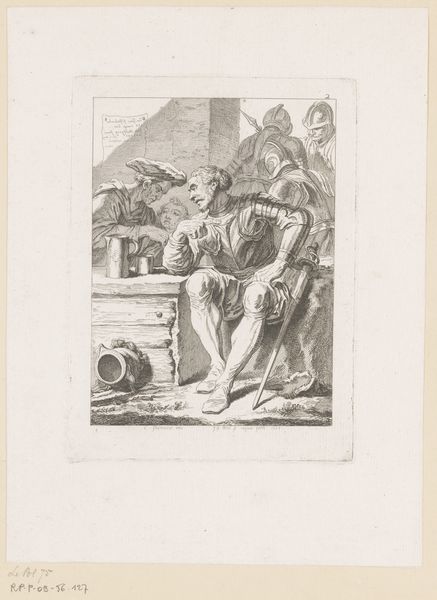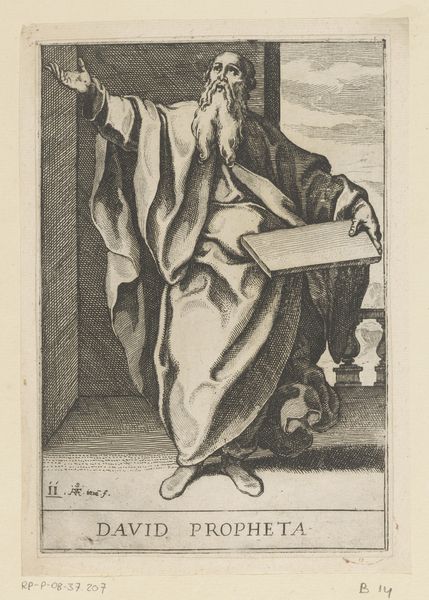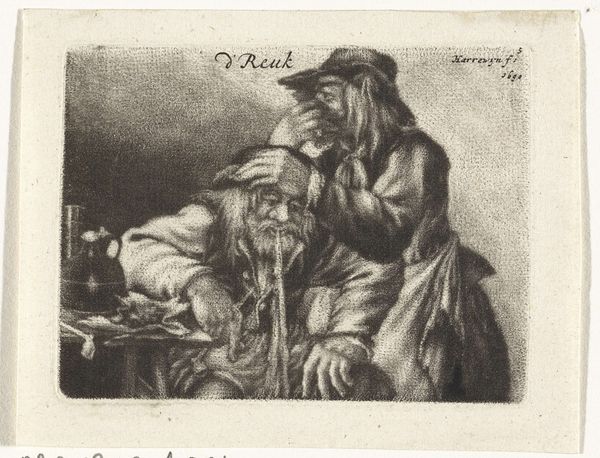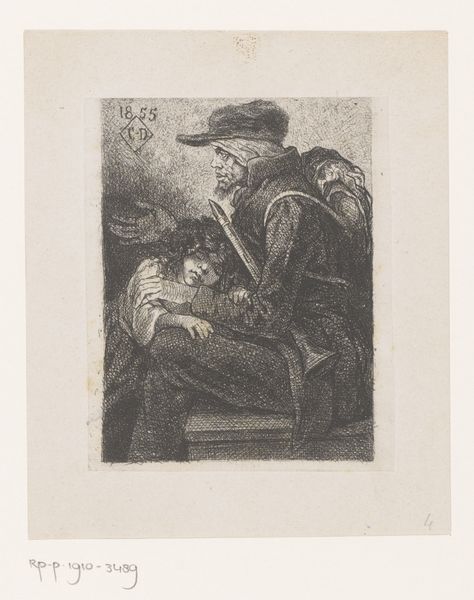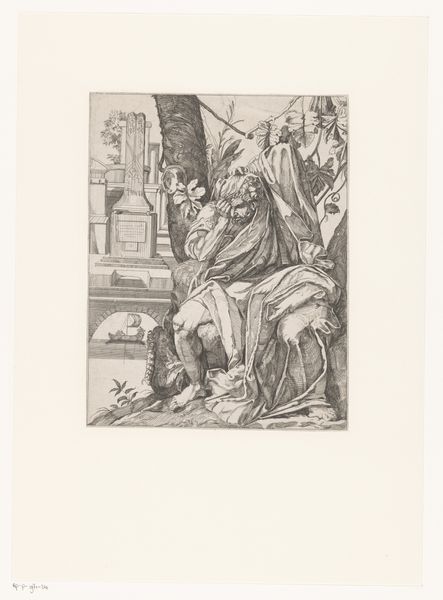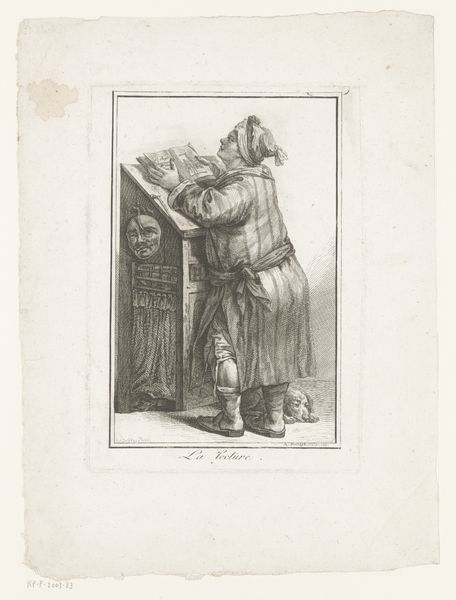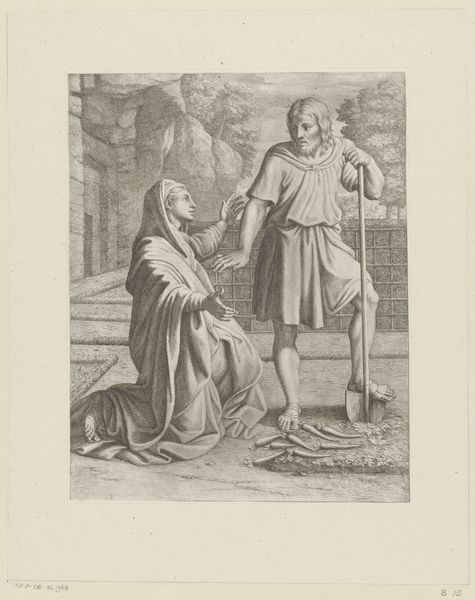
print, engraving
#
neoclacissism
#
narrative-art
# print
#
form
#
line
#
history-painting
#
academic-art
#
engraving
#
realism
Dimensions: height 383 mm, width 269 mm
Copyright: Rijks Museum: Open Domain
Editor: This is "Moord op Archimedes," or "The Murder of Archimedes," a print made sometime between 1776 and 1820 by Ernst Morace. The crispness of the engraving is striking. I'm really drawn to how Morace captures the texture of the fabrics and the smoothness of the globe. What aspects stand out to you? Curator: I see a clear emphasis on production. The engraving itself is a testament to the skilled labor involved in reproducing images, making historical narratives accessible to a wider audience through print culture. The stark contrast highlights the brutal materiality of the soldier’s weapon against Archimedes' vulnerable flesh. The book and the globe, crafted objects themselves, speak to human knowledge and its precariousness. Editor: So, you're focusing on the physical elements as a way to understand the meaning? Curator: Precisely. Consider the context: this work emerged during a period of revolution and upheaval. The neoclassical style, with its emphasis on line and form, references classical ideals. However, the medium of print democratizes this style and carries within it an element of reproducibility and mass consumption of such aesthetics. Do you see the contrast between the violence of the subject and the refined style in which it's made? Editor: Yes, definitely. There’s almost a tension between the clean lines and the violent act. It's like the tools of knowledge and reason—the book, the globe—are being directly confronted by brute force, made possible by the very real labor that produced that sword. Curator: And, how might the relatively cheap and accessible medium of print, compared to, say, oil painting, affect the interpretation of this historical event? How does its accessibility speak to revolutionary ideals, or even comment upon their failures? Editor: I hadn't thought about it that way. I guess that by making it a print, it is, in a sense, industrializing and commodifying this dramatic event, but also making a powerful statement about the fragility of intellect when faced with physical power. Thanks, I’m definitely seeing this print in a new light.
Comments
No comments
Be the first to comment and join the conversation on the ultimate creative platform.
